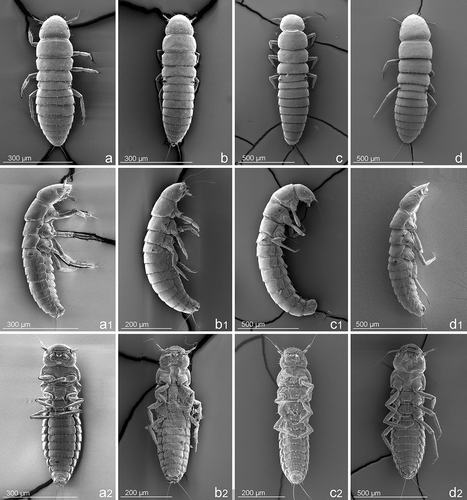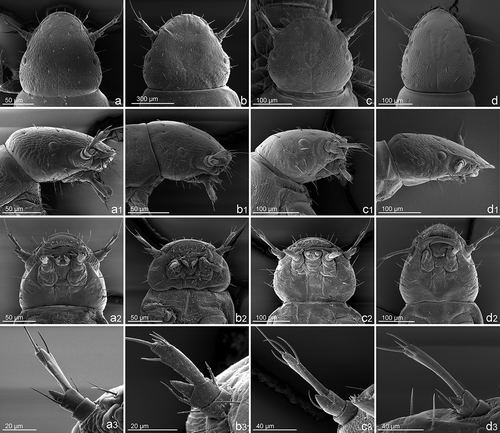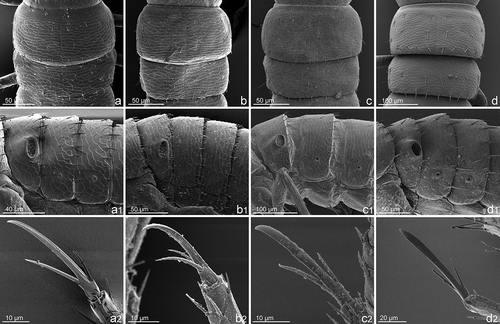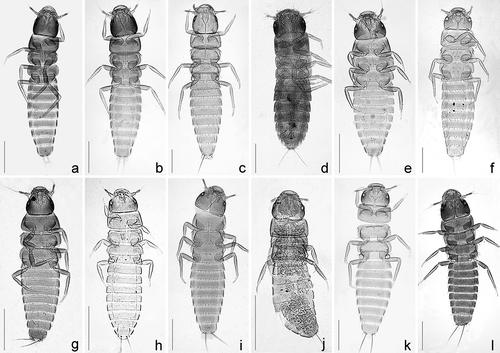Figures & data
Table I. Main sizes (in mm) of the Meloe (Eurymeloe) first instar larvae mounted on slides and examined with a light microscope. Abbreviations: A1–A3 = length of antennomeres I–III; ABL = length of abdomen; ASL = length of apical antennal seta on A3; BL = body length; ESL = epicranial stem length; HL = head length; HW = head width; N. = number of examined specimens; SD = diameter of stemmata; PL = prothorax length; PW = prothorax width; SPA = abdominal spiracle maximum width; SPM = mesothoracic spiracle maximum width; TSL = length of terminal abdominal setae
Figure 1. First instar larvae of Meloe (Eurymeloe) (a) apenninicus, (b) apivorus, (c) ganglbaueri and (d) mediterraneus: habitus in (a–d) dorsal, (a1–d1) right lateral and (a2–d2) ventral view.

Figure 2. First instar larvae of Meloe (Eurymeloe) (a) apenninicus, (b) apivorus, (c) ganglbaueri and (d) mediterraneus: head in (a–d) dorsal, (a1–d1) right lateral and (a2–d2) ventral view; (a3–d3) right antenna in anterior view.

Figure 3. First instar larvae of Meloe (Eurymeloe) (a) apenninicus, (b) apivorus, (c) gangbaueri and (d) mediterraneus: (a–d) pro- and mesonotum (dorsal view), (a1–d1) abdominal tergites I–III (left lateral view) and (a2–d2) claws (midlegs).

Figure 4. Images of slide-mounted first instar larvae of the following Meloe (Eurymeloe) species: (a) brevicollis, (b) corvinus, (c) mediterraneus, (d) affinis, (e) apenninicus, (f) apivorus, (g) flavicomus, (h) ganglbaueri, (i) glazunovi, (j) rugosus, (k) scabriusculus; and (l) Meloe (Coelomeloe) tuccius. Scale bar: 0.2 mm.
